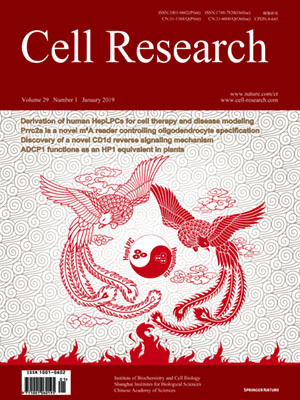
Advanced Search
Submit Manuscript
Advanced Search
Submit Manuscript
Volume 29, No 1, Jan 2019
ISSN: 1001-0602
EISSN: 1748-7838 2018
impact factor 17.848*
(Clarivate Analytics, 2019)
Volume 29 Issue 1, January 2019: 83-86
Yi Yang 1, Jung-Mao Hsu 1, Linlin Sun 1,2, Li-Chuan Chan 1,3, Chia-Wei Li 1, Jennifer L. Hsu 1,3, Yongkun Wei 1, Weiya Xia 1,Junwei Hou 1, Yufan Qiu 1,4 and Mien-Chie Hung 1,3
1Department of Molecular and Cellular Oncology, The University of Texas MD Anderson Cancer Center, Houston, TX 77030, USA; 2Tianjin Key Laboratory of Lung Cancer Metastasis and Tumor Microenvironment, Lung Cancer Institute, Tianjin Medical University General Hospital, Tianjin 30052, China; 3Graduate School of Biomedical Sciences, The University of Texas Health Science Center at Houston, Houston, TX 77030, USA and 4The 3rd Department of Breast Cancer, China Tianjin Breast Cancer Prevention, Treatment and Research Center, Tianjin Medical University Cancer Institute and Hospital, National Clinical Research Center of Cancer, Tianjin 300060,China
https://doi.org/10.1038/s41422-018-0124-5